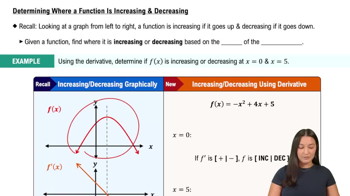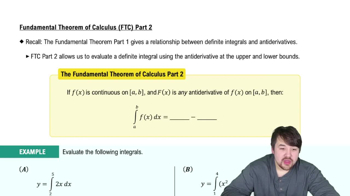In Exercises 11–18, find the slope of the function’s graph at the given point. Then find an equation for the line tangent to the graph there.
h(t) = t³ + 3t, (1, 4)

 Verified step by step guidance
Verified step by step guidance Verified video answer for a similar problem:
Verified video answer for a similar problem:



 5:13m
5:13mMaster Slopes of Tangent Lines with a bite sized video explanation from Patrick
Start learning